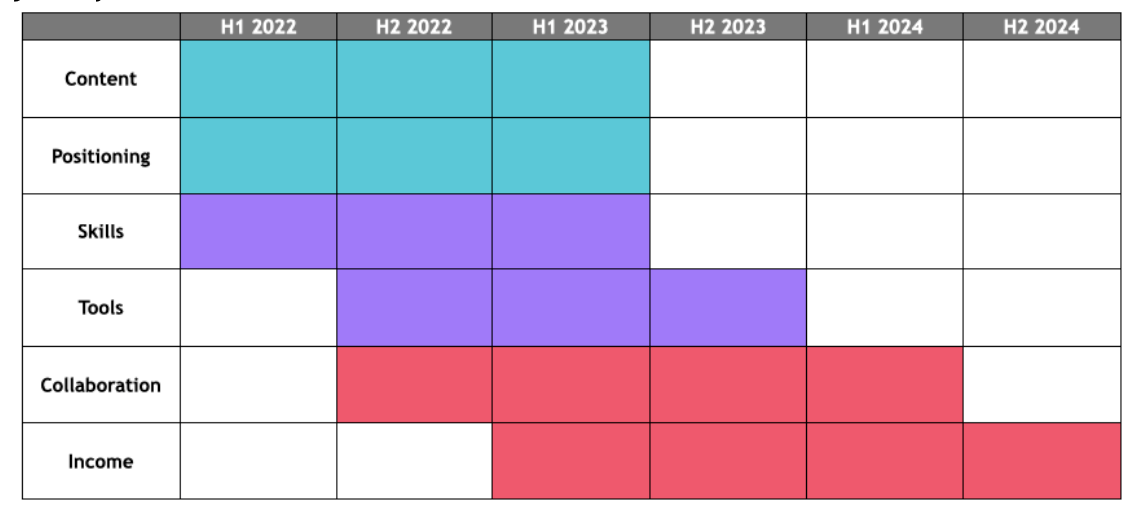How nonprofits are embracing new technologies during COVID-19

Many nonprofits embraced digital during COVID-19 to maintain their service delivery, volunteer management, stakeholder engagement, and internal communication.
However, many of those nonprofits didn’t have the tools or processes in place prior to COVID-19 so we wanted to find out more about the nature of their digital delivery and how this can be supported.
We’ve surveyed charitable organisations based in the UK and France, with support from JPMorgan Chase, to better understand the digital challenges they are facing and to develop quick wins and define strategic initiatives to address them.
We’re launching a series of blogs to look at the interesting findings in more detail and what we can learn from these experiences as funders, nonprofits, and intermediaries in the charity sector.
In the first blog, we highlighted the key learnings of nonprofits’ digital delivery and the impact of COVID-19, while in the second blog, we looked at how nonprofits can better prioritise and understand the digital issues they are facing.
In this third blog, we’ll explore how nonprofits can understand what technology works for them. We will look at how nonprofits can assess possible solutions and how they can then create and implement a plan for new technologies.
Adopting new technology - challenges and opportunities
Embracing digital technologies has created new opportunities for nonprofits. Many of them are now able to reach a wider audience with their messaging and support their beneficiaries online without being limited by certain geographies. Technology has also opened up the opportunity to explore new projects.
Despite these multiple opportunities, digital transformation led to several challenges. These included digital poverty of their end-users, out-of-date software, stakeholders’ level of comfort with technology, and staff’s ability to adopt new technologies.
More specifically, most organisations reported agreement that internal staff, delivery partners and volunteers were comfortable with the technology they currently used (71%, 85%, and 63% respectively) but there were lower levels of understanding among service users, with 43% of respondents considering them neutral.

This highlights the importance of ensuring that all digital improvements should be designed and implemented with every relevant stakeholder in mind. Digital improvements should acknowledge the lower reported levels of technology understanding for certain stakeholders and look to address these challenges by providing simple, easy to use, and accessible processes and systems. Service users’ lack of confidence with technology may affect their transition to accessing digital resources. There may also be room for improvement in how organisations communicate and roll out changes to service users, to optimise user adoption through well designed digital experiences.
Understanding technology options and assessing possible solutions
Once organisations have compiled a list of prioritised needs, it is then time to consider how to effectively address these. To do this, it’s important for nonprofit staff to have a fair understanding of the available technology options and how these can be used to address their identified needs. The world of technology continues to evolve rapidly, but all nonprofits can develop the confidence to know what good technology looks like and to learn what’s possible.
Today, it’s possible to address many of the challenges we’d considered within Blog 2 with out of the box technology. Some of the features and considerations with currently available technology include:
- ‘No code’ technology - without any coding experience, you can now develop technology solutions utilising the drag and drop functionality.
- No manual data management - automate the collection and analysis of data and reduce the time required to move data held in spreadsheets from one location to another.
- Internal collaboration and email integration - collate internal knowledge and resources in a single place to enable teams to find the information they need faster.
- Automation and integration - manual and repetitive processes can be automated in order to free up staff time for high impact and higher-value activities.
- Open technologies - open technology solutions provide greater freedom to access ecosystems of integrations or talent, alongside free training and support. This is in contrast to closed technologies that can tie buyers into expensive contracts without flexible access to their data.
- Internal capacity and experience - the upskilling of internal stakeholders can deliver significant internal efficiencies on current workflows, as well as enable these team members to use this knowledge to identify further areas for improvement.
- Ability to attract and grow talent - the expectations of digital experiences have increased dramatically during the pandemic for all stakeholders including staff members and volunteers. An intuitive and easy to use technology stack can attract and retain talent.
We explored how nonprofits are currently using technology and their understanding of available technologies during our workshops.
One organisation was looking to understand how they can manage their current client data and impact to improve tracking, reporting, and the overall user experience. However, challenges were identified around dedicating the time to explore the issue and creating a business case that articulates the benefits of a move to a new CRM. To address this, our approach was to first understand what their current CRM is doing and how they can leverage its reports and dashboard to support their team’s activities.
This challenge was reflected across our UK survey respondents where only 29% of respondents said they were very confident in the quality of their data, and more than 78% of respondents noted that their teams take too much time to collate data and generate insights. In certain instances, there may be easy ways to improve the set-up of currently used technologies that address the challenges, instead of requiring the procurement of new technology solutions.
Creating an iterative roadmap
The early stages of digital change can be daunting. It’s, therefore, crucial to create a plan for new technologies that considers an organisation’s available resources and time.
The plan should help each organisation leverage current and future investments, through a roadmap of iterative improvements. The approach provides an ongoing journey of evolution, rather than transformation. Improvements can be embedded into business as usual, or specific projects, where they can add significant value.
We would always recommend that the process of creating this plan includes the preparation of a cost-benefit analysis to better inform business decision-making processes. This analysis should consider the full cost of technology and incorporate the cost of manual processes and reporting, as well as the opportunity cost of this (for example, being able to submit a bid to the growing number of tenders related to digital service delivery). These calculations can also determine the break-even point of investment.
A roadmap provides opportunities to celebrate success. Scheduling smaller, high impact changes early in a roadmap can prove the ROI of digital investment and help to secure buy-in for the later roadmap stages. An iterative approach also provides flexibility to pivot and change approaches as further insight is gained on stakeholders, and the agility to reprioritise or reorganise tasks and incorporate the learnings gained.
As an output of each in-depth workshop we conducted, we designed a roadmap for the upcoming 12 months setting out the recommended next steps.
For example, one of the participating organisations in our workshops has embarked on a project to migrate their CRM to a new provider. They were at the stage of defining what they want from the new CRM, as well as the budget and project plan to deliver the migration. Being at the early stages of their digital journey meant that they still lacked the internal skills and the internal buy-in that gets ‘everyone onboard' with this project.
We designed a 12-month plan with the goal to demonstrate the impact of their investment in digital transformation and to establish a new organisational perspective on digital ways of working.
Our recommendation to organisations who are at an early stage in their digital journey is to set up a plan for the transition and importantly to aim for scalable technology. After all, the goal when assessing new technologies is to actively look for opportunities to deliver better impact, resources, and services.

What’s next
It can be challenging to embrace new technologies and the new ways of working they bring, especially when an organisation is at an early stage in their digital journey. Consider this journey as a process of evolution rather than transformation, where a roadmap provides iterative improvements and opportunities to celebrate success throughout.
Nonprofits need the skills, confidence, and resources to implement a plan that will work based on their needs. Nonprofit organisations can make the most of their time and investment by aiming for intuitive and easy-to-use technology. Experiences should be designed to be accessible to all stakeholders with the ultimate goal of simplifying processes and improving access to services.
As a nonprofit, think creatively. Use sector-specific knowledge with confidence and look at what others are doing to tackle similar problems.
As a funder, you can direct your grantees to sources of support that help them find examples of good technology, processes, and tools. You can also provide opportunities for your grantees to increase their expertise in the key areas and support this evolution journey.
Latest articles

In a world of growing uncertainty, small and local non-profit organisations often find themselves with competing priorities and struggle to plan how to allocate their available resources. Despite the increasing demand for their vital work, they are not always able to allocate the funds they receive to strategic planning and future growth.

As the world becomes more digitally-focused, it’s essential for nonprofits to have a digital presence. With more and more options for online engagement, we know that this can be challenging for nonprofits to tackle. But, we also know that it is a huge opportunity to increase audience engagement, awareness and fundraising. To help nonprofits navigate this, we’re going to explore the “whys” and “hows” of creating a nonprofit digital strategy. We’re even providing a free digital strategy canvas to help nonprofits improve their online presence in just a few steps.
Related posts

Find out more about the process of creating a persona-led social prescribing support tool to help organisations in the mental health and wellbeing sector.

Last month we hosted a webinar with a very interesting panel sharing their tips and tricks to demystify technology, and how best to harness its power.
See who we help
Contact us
Want to learn more?
Email Jonathan and start a conversation





